This 7 Days in Taiwan Itinerary offers an immersive plan to discover the captivating island nation. With friendly locals, vibrant night markets, efficient public transportation, stunning landscapes, and successful pandemic management, Taiwan has become a must-visit destination.
Starting in Taipei City, visitors can explore iconic landmarks like Taipei 101 and Chiang Kai-Shek Memorial Hall, as well as hike Elephant Mountain for panoramic city views.
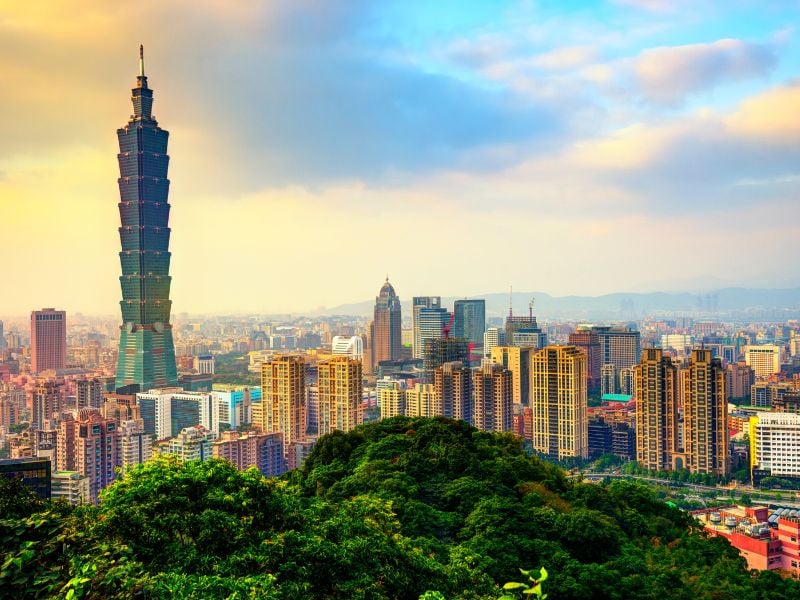
The itinerary then takes travelers to Taichung City, including the renowned Keelung Night Market and Sun Moon Lake, before ending with a relaxing escape to Beitou Hot Spring.
Good To Know
- Taiwan offers a warm and welcoming atmosphere with friendly locals.
- The night markets in Taiwan are considered some of the best in Asia.
- Taiwan has an excellent public transportation system, particularly the MRT.
- The country boasts beautiful landscapes and natural attractions, such as the Shifen Waterfall and Sun Moon Lake.
Day 1 – Taipei City Explorations
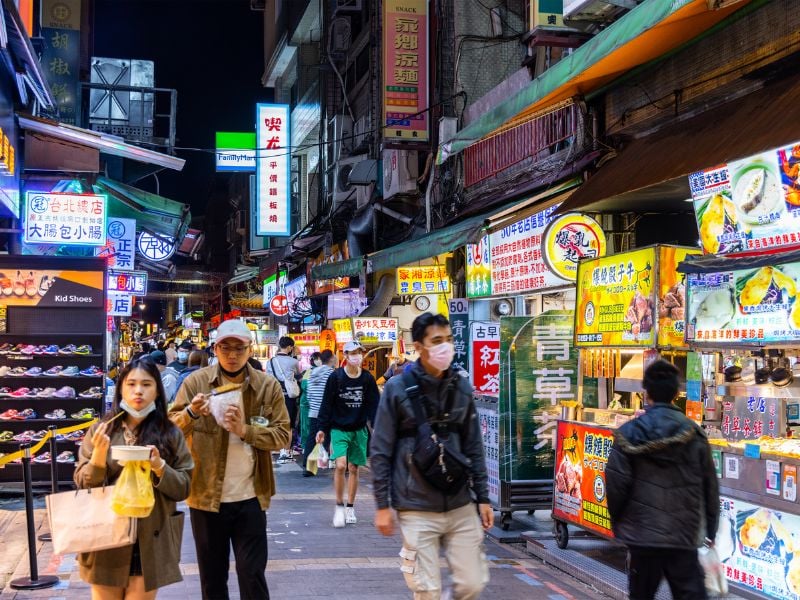
On Day 1 of Taipei City Explorations, travelers can use the excellent MRT for transportation and get an EasyCard for public transportation. The MRT system in Taipei is efficient, clean, and convenient, making it easy to navigate the city.
With the EasyCard, visitors can easily pay for their rides on the MRT, buses, and even at convenience stores.
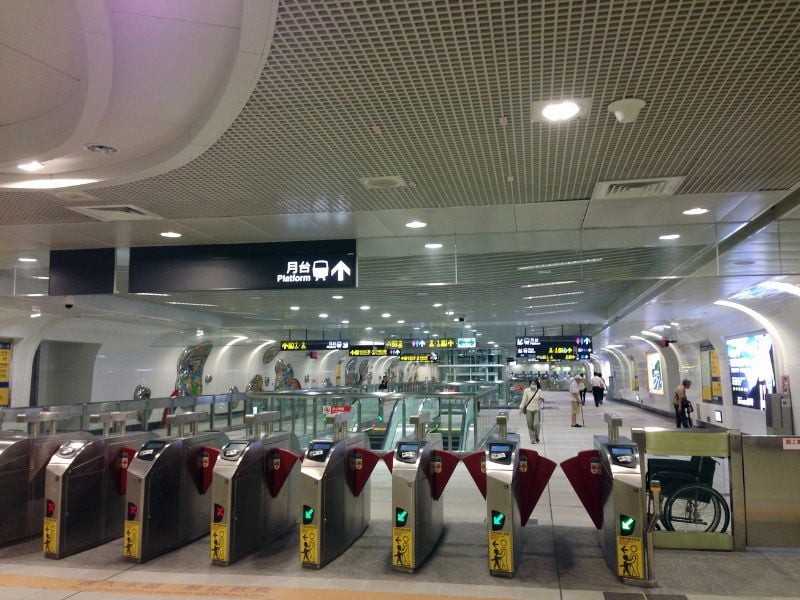
For those interested in outdoor activities, Taipei offers several hiking options. One popular choice is Elephant Mountain, known for its stunning panoramic view of Taipei City.
Plus, Taipei is home to must-visit museums such as the National Palace Museum, which houses an extensive collection of Chinese art and artifacts. Another notable museum is the Taipei Fine Arts Museum, showcasing contemporary Taiwanese and international art.
Whether it’s exploring nature or Taking in culture, Taipei City has plenty to offer on Day 1 of the itinerary.
Day 2 – Taipei Cool Neighborhoods and Attractions
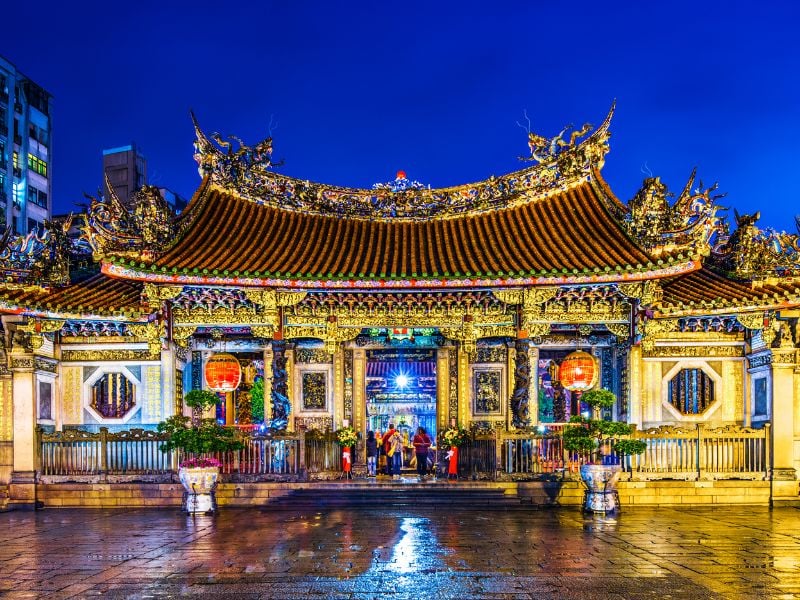
Explore Longshan Temple and experience the chanting ceremony, then venture into the historic temples in Wanhua.
Longshan Temple, located in the heart of Taipei, is one of the city’s most important religious sites. Visitors can witness the mesmerizing chanting ceremony, a spiritual experience that immerses them in the rich cultural heritage of Taiwan.
Afterward, take a stroll through Wanhua, the oldest district in Taipei, and explore its historic temples. Beimen Gate, a well-preserved city gate, is worth admiring for its architectural beauty. Dihua Street, lined with traditional shops, offers a glimpse into Taipei’s past.
For a taste of the city’s vibrant youth culture, head to Ximending Youth Shopping District. This bustling area is filled with trendy shops, street performances, and mouthwatering street food, making it a favorite among locals and travelers alike.
- Enjoy the spiritual ambiance of Longshan Temple’s chanting ceremony.
- Admire the architectural beauty of Beimen Gate.
- Explore the traditional shops along Dihua Street.
- Indulge in the vibrant youth culture of Ximending Youth Shopping District.
- Savor the delicious street food at Ximending Youth Shopping District’s food stalls.
Day 3 – Epic Day Trip From Taipei
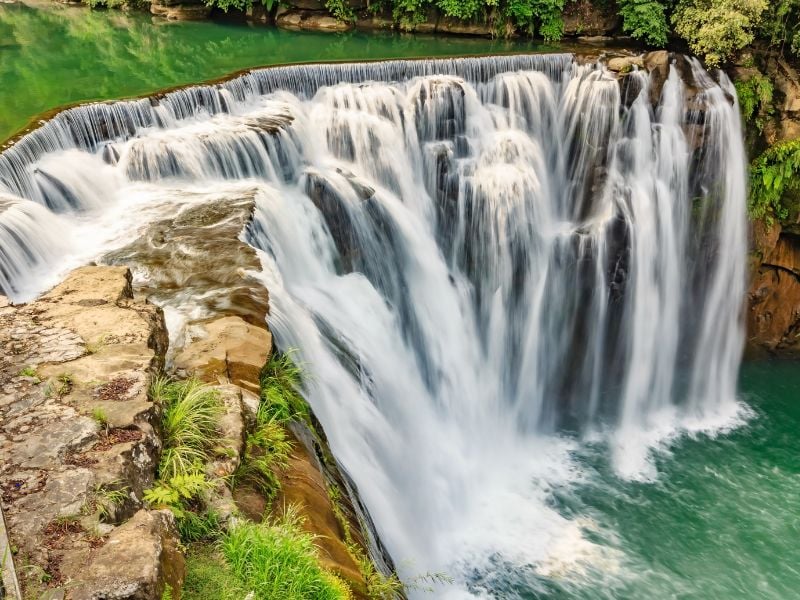
Embark on an unforgettable day trip from Taipei that combines four of the best day trips in a single day. Start by visiting the majestic Shifen Waterfall, the widest waterfall in Taiwan. Take in the breathtaking beauty of the cascading water as you explore the surrounding nature trails.
Afterward, hop on the TRA train to Taipei Main Station and head to the historic town of Jiufen. Enjoy the rich culture and history of the area as you wander through its narrow streets lined with traditional teahouses and souvenir shops.
Don’t forget to try the famous local snacks such as taro balls and fish-shaped ice cream. The following table provides a summary of the day trip:
| Time | Activity |
|---|---|
| 9 AM | Visit Shifen Waterfall |
| 11 AM | Take TRA train to Taipei Main Station |
| 12 PM | Explore Jiufen |
| 5 PM | Return to Taipei |
This day trip offers a perfect balance of exploring natural wonders and experiencing cultural delights in Jiufen.
Taichung City and Surrounding Attractions
Taichung City offers a stack of attractions and activities for visitors to explore in Central Taiwan. Here are some highlights:
- Taichung night markets: Experience the vibrant atmosphere and indulge in delicious local street food at the various night markets in Taichung. From Feng Chia Night Market to Yizhong Street Night Market, there’s something for everyone’s taste buds.
- Rainbow Village transformation: Once a military dependents village, Rainbow Village has been transformed into a colorful outdoor museum. Admire the vibrant murals and learn about the history behind this unique attraction.
- Gaomei Wetland: Located on the coast of Taichung, Gaomei Wetland is a picturesque wetland area that offers stunning views of sunsets and migratory birds. Take a leisurely stroll along the boardwalk and Enjoy the serene surroundings.
- Keelung Night Market: Known for being one of the best night markets in Taiwan, Keelung Night Market is a food lover’s paradise. Sample a wide variety of local delicacies and experience the bustling atmosphere of this popular market.
- Feng Chia Night Market: Taichung’s largest and most popular night market, Feng Chia Night Market is a must-visit for shopping enthusiasts. Explore the countless stalls selling clothing, accessories, and other unique items, and savor the delicious street food along the way.
Sun Moon Lake
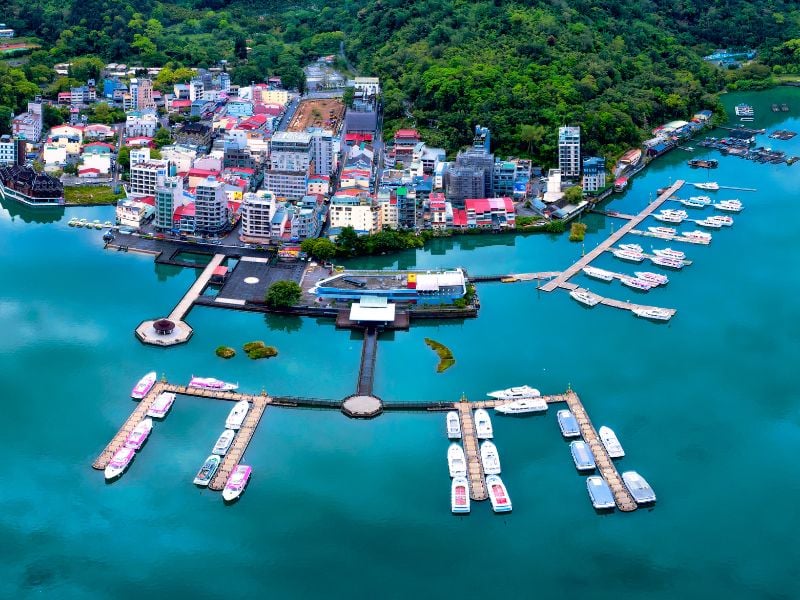
Situated in the heart of the Central Mountain Range, Sun Moon Lake offers stunning lake views and is home to one of Taiwan’s smallest aboriginal tribes. Visitors to Sun Moon Lake can engage in a variety of boating activities, such as taking a leisurely cruise or renting a paddleboat to explore the lake’s serene waters.
The area surrounding the lake is rich in indigenous tribes and culture, providing an opportunity for travelers to learn about the traditions and customs of these communities. Along With enjoying the natural beauty of the lake, visitors can also visit the aboriginal villages nearby to experience their unique way of life.
Sun Moon Lake truly offers a captivating blend of breathtaking scenery and culture.
Beitou Hot Spring
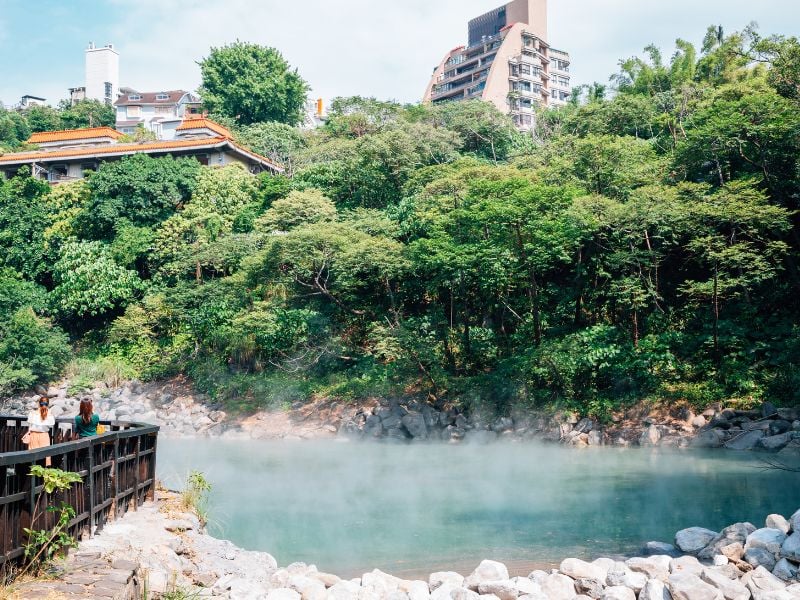
Visitors can relax in the thermal hot spring water and experience the Japanese influence in Beitou. The hot springs in Beitou are known for their healing properties and are a popular attraction for locals and travelers alike. Here are some reasons why Beitou Hot Spring offers a unique atmosphere:
- Tranquil Setting: Surrounded by lush greenery and mountains, the hot springs in Beitou provide a serene and peaceful environment for relaxation.
- Japanese Architecture: The Japanese influence in Beitou can be seen in the traditional Japanese-style buildings and bathhouses that have been preserved throughout the years.
- Hot Spring Ramen: Indulge in a bowl of hot spring ramen, a unique dish where the noodles are cooked using the natural hot spring water, giving it a distinct flavor.
- Hot Spring Eggs: Try the famous hot spring eggs, which are cooked in the hot spring water and have a creamy and flavorful yolk.
- Beitou Hot Spring Park: Take a stroll in the beautiful Beitou Hot Spring Park, home to various hot spring pools, foot baths, and scenic walking trails.
In Beitou Hot Spring, visitors can truly enjoy the Japanese-influenced atmosphere and enjoy the therapeutic benefits of the thermal hot spring water.
Day 7 – Departure and Final Thoughts
On Day 7, the travelers bid farewell to Taiwan and reflect on their incredible journey. They take a moment to appreciate the warm hospitality of the locals, who made their trip memorable. They reminisce about the vibrant night markets, which are considered the best in Asia, and the convenience of the excellent public transportation system.
The travelers also fondly recall the alluring landscapes they encountered, from the panoramic view of Taipei from Elephant Mountain to the stunning Sun Moon Lake. They commend Taiwan’s commendable handling of the pandemic, which allowed them to explore the country with peace of mind.
As they prepare to leave, the travelers consider bringing back unique souvenirs from Taiwan, such as traditional tea sets, local handicrafts, or delicious pineapple cakes. These items serve as cherished reminders of their unforgettable experience in Taiwan.
Common Questions
How Much Does the Easycard Cost and Where Can I Purchase One?
The EasyCard can be purchased at various locations in Taiwan, such as convenience stores and MRT stations. It costs around NT$100 and offers benefits and discounts for public transportation, making it a convenient option for travelers.
Are There Any Specific Guidelines or Rules for Visiting the Temples in Taipei?
When visiting temples in Taipei, it is important to follow temple etiquette and dress modestly. Visitors should remove their shoes before entering, keep their voices low, and refrain from touching or photographing sacred objects without permission.
What Is the Best Way to Get From Taipei to Jiufen?
The best way to get from Taipei to Jiufen is by taking a bus or hiring a private car. The journey takes around 1-2 hours, depending on traffic. Alternate routes include taking a train to Ruifang and then a taxi or bus to Jiufen.
Are There Any Recommended Activities or Attractions in Taichung City Besides the Night Market?
Recommended activities in Taichung City, besides the night market, include exploring Rainbow Village, a colorful outdoor museum, and visiting the Taichung Metropolitan Opera House, known for its stunning architecture and cultural performances.
How Long Does It Take to Travel From Taichung to Sun Moon Lake by Bus?
The bus journey from Taichung to Sun Moon Lake takes approximately 1.5 hours. Travelers can also consider alternative transportation options such as taking a taxi or hiring a private car for a shorter travel time.
The Sum Up
To sum it up, this detailed 7 days in Taiwan itinerary offers a comprehensive plan for travelers to explore the captivating island nation.
From the vibrant streets of Taipei City to the stunning landscapes of Taichung and the relaxing hot springs of Beitou, there’s something for everyone to enjoy.
With its welcoming locals, excellent public transportation, and unforgettable experiences, Taiwan truly is a must-visit destination.
So pack your bags and Get set for an incredible adventure in this amazing country.
